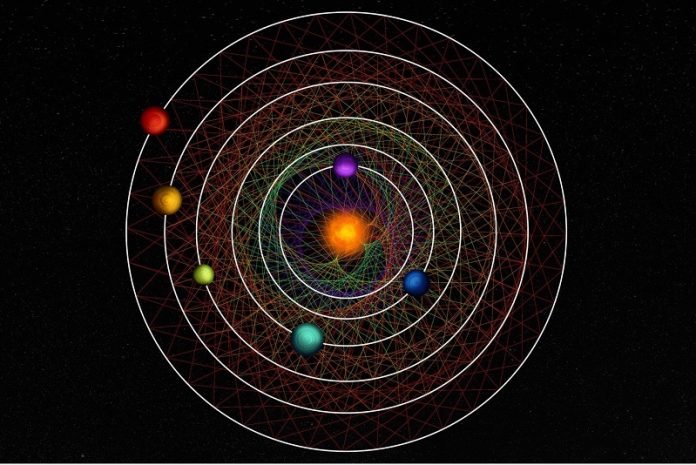
In a remarkable discovery, scientists have found a star system, not too far from Earth, where six planets are performing a cosmic dance around their central star.
This system, located in the constellation of Coma Berenices about 100 light-years away, is a rare spectacle where planets move in a synchronized pattern, almost like they follow the rhythm of music.
The star HD110067 has become a focus of interest for astronomers thanks to this unusual planetary arrangement.
The discovery, led by Rafael Luque, a scientist from the University of Chicago, was published in the journal Nature.
It offers a unique window into understanding how planets form and evolve over time, particularly sub-Neptunes, which are the most common type of planets found outside our solar system.
This fascinating system was first noticed by NASA’s Transiting Exoplanet Survey Satellite (TESS), which detected dips in the brightness of HD110067. These dips suggested that planets were passing before the star, blocking its light momentarily.
Further analysis, combining data from TESS and the European Space Agency’s CHaracterizing ExOPlanet Satellite (Cheops), revealed the extraordinary nature of this star system.
What makes this system stand out is the orbital resonance of its planets.
In simple terms, orbital resonance occurs when planets exert a regular, periodic gravitational influence on each other, usually because a ratio of small integers relates their orbital periods.
In HD110067, the planets are locked in a precise gravitational dance.
The closest planet to the star completes three orbits in the same time that the next planet completes two. This 3/2 resonance pattern is repeated among the four innermost planets. Further out, a different rhythm takes over, with a 4/3 resonance repeating twice among the outer planets.
This precise, rhythmic pattern is not just a temporary arrangement. Scientists believe these planets have been locked in this orbital dance since the system was formed billions of years ago. Such an enduring resonance is rare in the galaxy.
While many multi-planet systems start in a resonant state, various cosmic events can easily disrupt this balance. A massive planet, a close encounter with another star, or a giant impact event can all throw planets out of their rhythmic orbits.
As a result, most multi-planet systems known to astronomers are not in resonance, or they show evidence that they could have been in resonance at one point.
Finding a system like HD110067, where the planets have maintained their resonant relationship, is exceptionally rare and significant.
It’s estimated that only about one percent of all systems remain in resonance, with even fewer displaying such a clear chain of planets in this configuration.
The discovery of HD110067 is not just an exciting moment for astronomers but also a crucial one. It provides a glimpse into the original layout of a planetary system that has remained unaltered through time.
This system is a benchmark for understanding how planets, especially the most common sub-Neptunes, form and evolve.
More precise measurements of the planets’ masses and orbits are needed to deepen our understanding of this star system. Such information will further clarify the picture of how this unique system came to be and may even offer insights into the likelihood of conditions that could support life.
HD110067 is a reminder of the vast and fascinating universe we live in, filled with wonders waiting to be explored.



